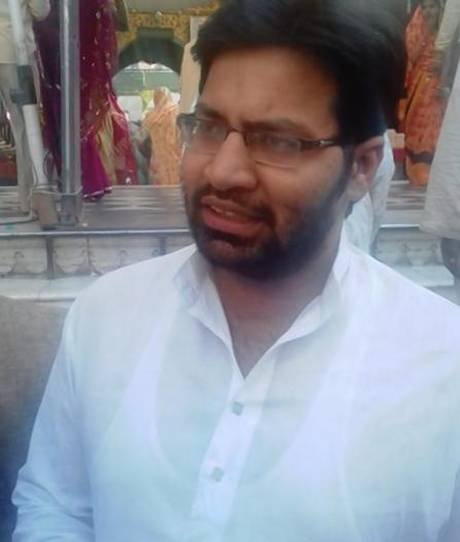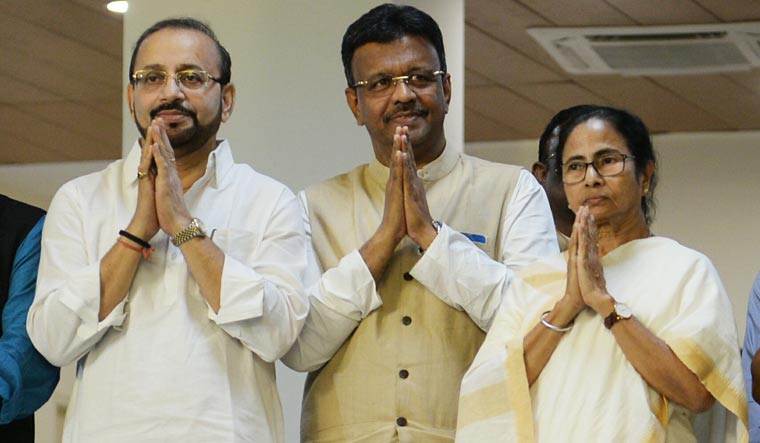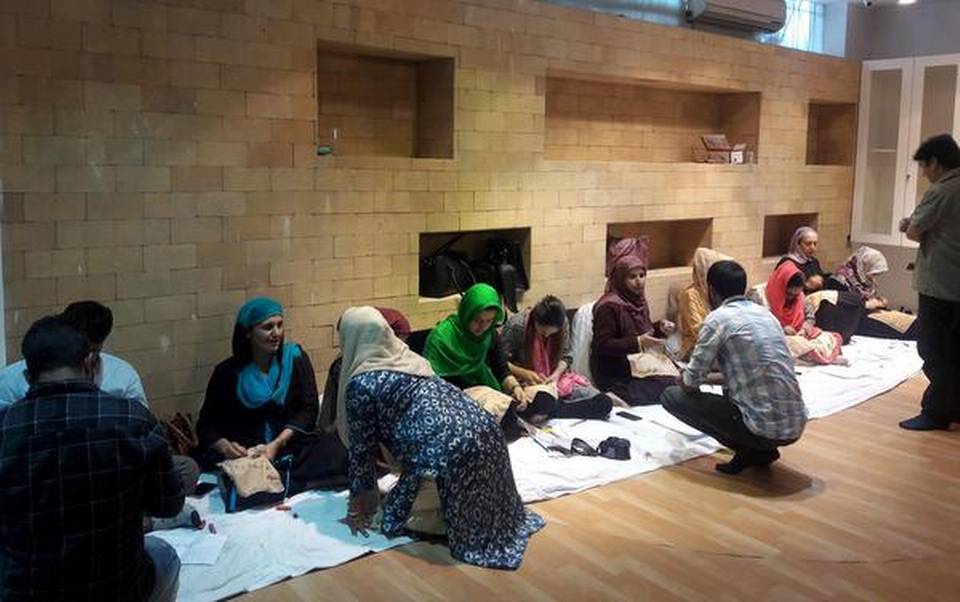Jamjhandi, Bagalkot District , KARNATAKA :
The 25-year-old crafts teacher, who follows the Muslim faith, conducts daily classes on Hindu epics and prayers for her students, many of whom hail from Muslim families, in Old Hubballi area.
Hubballi :
Zarina Abubkar Gadkari is quietly practising what most people only preach — spreading communal harmony. The 25-year-old crafts teacher, who follows the Muslim faith, conducts daily classes on Hindu epics and prayers for her students, many of whom hail from Muslim families, in Old Hubballi area.
Zarina, a teacher at Spoorthi Rural Skill Development Training Centre, which provides free training to women in craft-making and sewing, conducts her spirituality class on the premises every evening. She does not charge anything for the lessons, which include Sanskrit verses, songs and stories from the Ramayana and the Mahabharata, and hymns on gods such as Ganesha and Hanuman.
Hailing from Jamkhandi in Bagalkot district, Zarina started learning devotional songs and shlokas after getting inspired through the Ramayana and Mahabharata serials on television. When she joined the training centre as a craft teacher, she also started singing and teaching them to students.
”It’s a wonderful feeling to recite the shlokas,” she says. “Sanskrit words never seemed difficult to me while I was learning them, and my family members gave me big moral support,” adds Zarina, who performs namaz every day, and also visits the church and reads the Bible.
“When I go to Bengaluru, I visit St Mary’s Basilica in Shivaji Nagar. It is one of my favourite places, and my family members also visit it with me,” she says, adding that such gestures from her family lend her huge moral support.
“We live in a country where communal harmony is everything, and each of us must work hard to achieve it,” she says.
The number of students in her classes has only increased over time, and they love every minute of it.
“I have been attending the classes of Zarina madam for over six months and she is a role model for many,” says Nasereen Attar, a student. “We never faced any restrictions in our homes about attending classes related to Hinduism. In fact, our parents encourage us to learn new things,” she adds.
Most students hail her as a motivating figure. “Her way of teaching and her commitment to religious harmony, besides her reciting of Sanskrit verses, left me stunned,” Shynaz Nadaf, another student, says. “It’s surprising to see Zarina madam perform namaz and as well as have darshan at temples,” Shreya M pitches in.
Zarina’s endeavour is praised by her colleagues too. “Her work shows that attachment to a religion is no hindrance to good work. She is a good human being,” says Mukthambika Narebol, a co-worker at the institute.
Zarina was introduced to the Ramayana and Mahabharata through teleserials by her parents when she was a child. She got interested in reciting the mantras and shlokas when she started teaching at the Spoorthi centre, where daily prayers are conducted.
“I also practised other verses like the Hanuman Chalisa and Gayatri Mantra. Initially, I faced problems in pronunciation but within 2-3 months I was able to recite them well in Sanskrit,” says Zarina, who draws a lot of strength from her family.
While her father Abubkar Gadkari is self-employed, her two brothers and two sisters are well-educated too, and her sister-in-law is a lecturer.
Zarina feels that the task of uniting people of different faiths has assumed greater significance today. “We live in the world’s largest democratic and secular country where all religions exist together. But in recent times, society has seen changes after the social media took the front seat,” she says.
Greater onus rests on the youth to build a cohesive society, adds Zarina. “Several young lives are going waste by getting involved in violence triggered by communal hate. We must also educate women about the ill-effects of religious divide, and bring awareness about nation-building activities,” she says, admitting that the task, however, is far from being easy.
source: http://www.newindianexpress.com / The New Indian Express / Home> States> Karnataka / by Kiran Balannanavar / Express News Service / November 25th, 2018



















